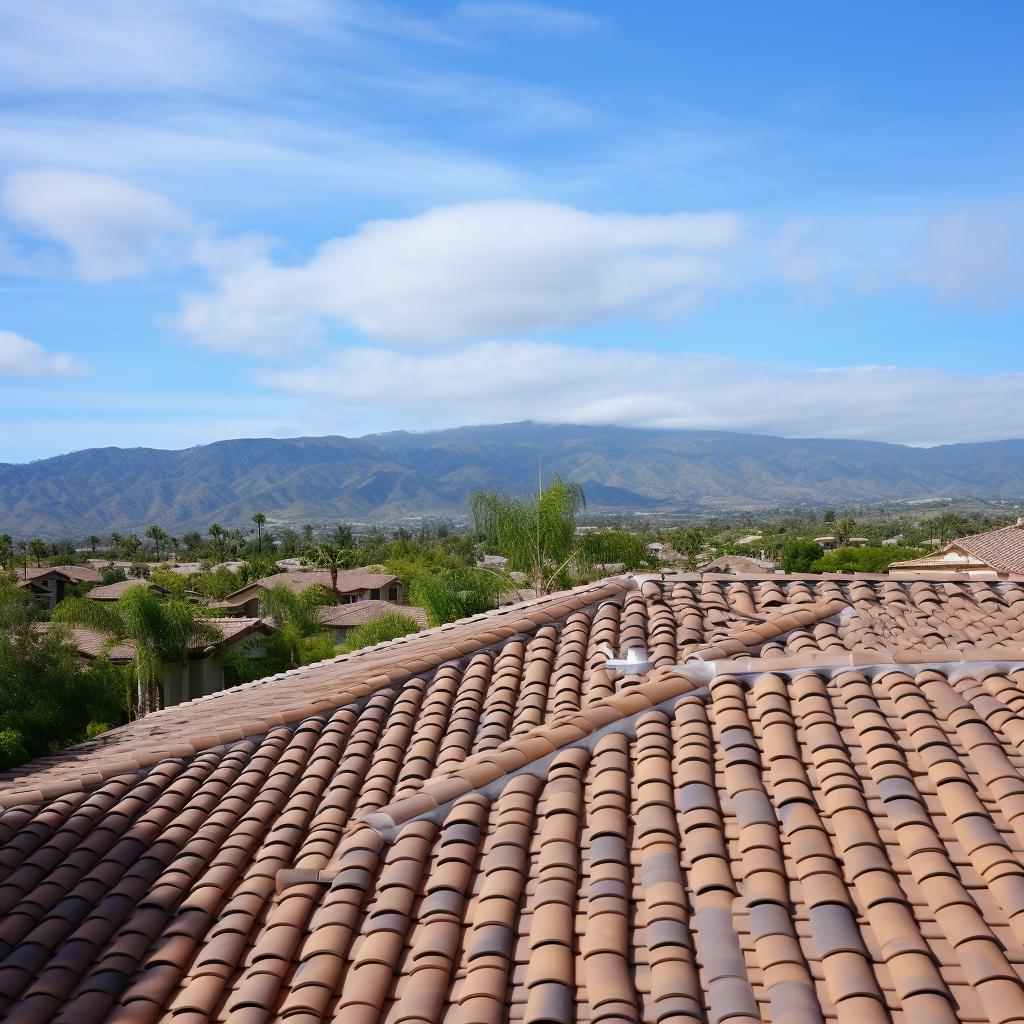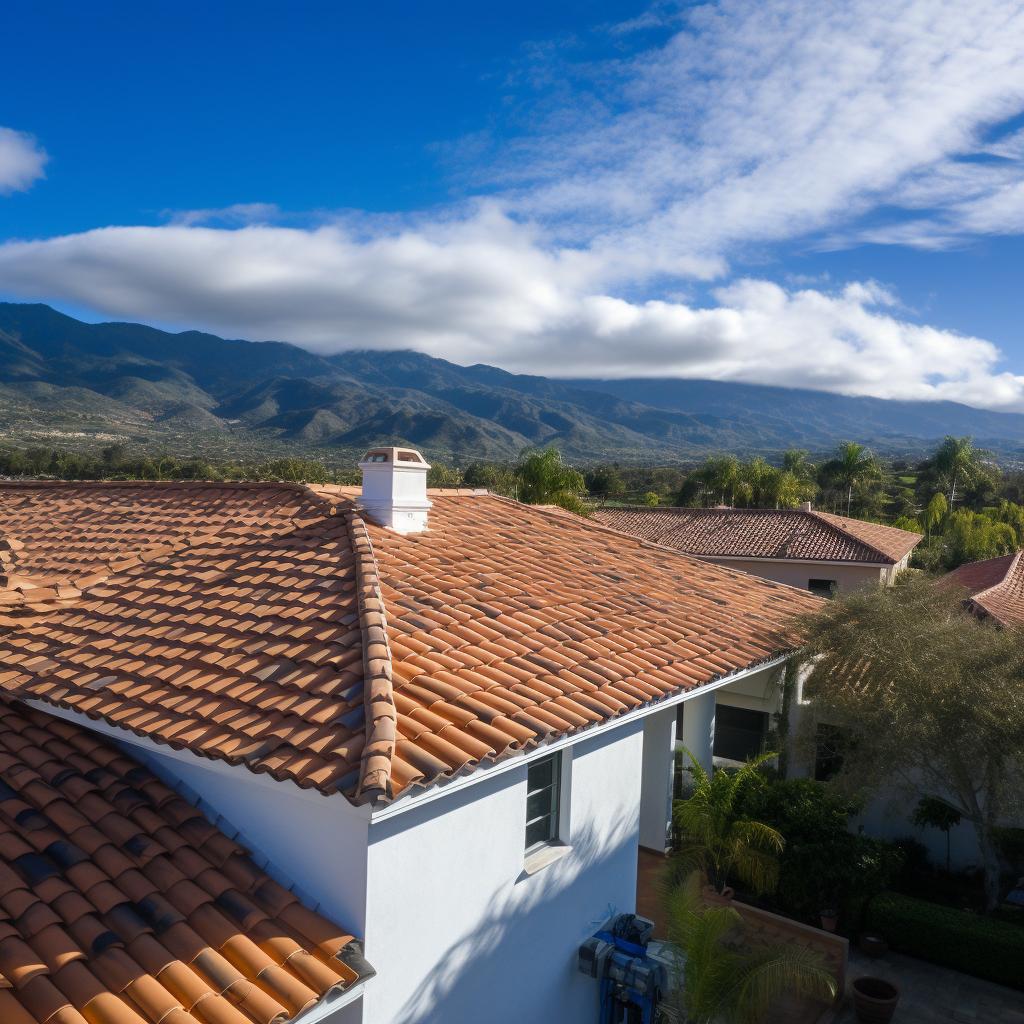As homeowners across Ontario grapple with rising energy costs, the role of roofing in energy conservation has catapulted to the forefront of cost-cutting strategies. Roofing innovation Ontario plays a crucial part in not only protecting homes from the elements but also in significantly reducing monthly utility bills. Through clever roofing choices and advanced materials, there exists an underutilized strategy that can lead to substantial savings.
The concept of hidden roofing strategies offers enticing opportunities for homeowners who are eager to slash their energy expenses. Unlike more obvious energy-saving tactics such as LED lighting or high-efficiency appliances, roofing improvements often remain overlooked, despite their potential impact on a home’s thermal performance. By focusing on this more clandestine approach, Ontarians have much to gain in terms of both comfort and cost.
Of particular significance is how well-suited these strategies are for those living in Ontario. The region’s climate-with its cold winters and warm summers-demands a roofing system that not only insulates effectively against frigid temperatures but also reflects heat during the hotter months. This dual requirement makes the pursuit of strategic roofing innovations all the more critical for enhancing energy efficiency and achieving lower long-term expenditures on home heating and cooling.
The Role of Roofing in Home Energy Efficiency
Roofing plays a pivotal role in a home’s energy efficiency by acting as the primary barrier between the interior of the residence and external temperatures. Whether it’s warding off the searing heat of summer or retaining warmth during Ontario’s cold winters, your roof greatly influences your living space’s climate control requirements.
Without proper roofing materials and insulation, homes can experience significant heat loss in winter and excessive heat gain in summer. These inefficiencies demand more from heating, ventilation, and air conditioning (HVAC) systems, which leads to inflated energy bills.
Insulation is essential because it reduces the amount of heat exchange through your roof. A well-insulated roof keeps warm air inside during colder months and prevents hot air from entering during warmer periods, leading to less reliance on artificial temperature regulation methods.
On the other hand, poorly insulated or outdated roofing can result in significant energy waste. Heat always moves toward cooler spaces; during winter, heated indoor air pushes toward the uninsulated roof and escapes outside, while in summer, outdoor heat moves into cooler interiors through a hot roof.
The choice of roofing materials also significantly affects your home’s thermal performance. Traditional materials such as asphalt shingles may absorb a lot of heat whereas reflective materials or coatings are designed to reflect solar radiation away from your home. Implementing energy-efficient roofing innovations can lead to immediate benefits for Ontario homeowners through reduced monthly utility bills.
| Roofing Feature | Energy Efficiency Impact |
|---|---|
| Reflective Materials | Decreases summer cooling cost by reflecting sunlight |
| Improved Insulation | Reduces overall HVAC system usage throughout the year |
| Air Sealing | Limits uncontrolled airflow that can undermine insulation effectiveness |
Proper investment into these areas is not only beneficial for personal comfort but also serves as an important consideration for those seeking to boost their property’s value with efficient features. Adopting such advancements is especially relevant today, given rising concerns over energy costs and environmental sustainability.
Traditional Roofing vs Roofing Innovation Ontario
In the realm of home energy consumption, roofing plays an influential role that is often underestimated. Traditional methods have served their purpose well for decades, however, with the rise of environmental awareness and technology advancements, homeowners are turning to contemporary solutions. The comparison between these two paradigms can significantly impact not only residential comfort but also long-term budgeting associated with energy costs.
Understanding Conventional Roofing Methods
Traditional roofing techniques have relied on standard materials such as asphalt shingles, metal, or clay tiles that offer basic protection from the elements. While these materials provide a fundamental level of performance concerning durability and weather resistance, they lack in areas critical to cutting down energy bills.
Without specialized features designed to reflect or insulate against heat, conventional roofs can absorb a major portion of sunlight during summer months leading to increased reliance on air conditioning systems. Additionally, minimal insulation properties in such roofing systems allow for substantial heat loss during Ontario’s harsh winters; this triggers higher heating bills and added energy consumption.
Embracing Modern Roofing Innovations
On the flip side lies an array of modern roofing innovation Ontario has embraced to enhance energy efficiency and sustainability in homes. These advancements include cool roof technologies which use reflective materials capable of deflecting more sunlight hence minimizing heat absorption.
Other innovations involve integrating solar-reflective granules into traditional shingle manufacturing processes – a hybrid approach that brings together the best aspects of classic design with new-age efficiency standards. These developments not only lower rooftop temperatures but also reduce the urban heat island effect, offering broader environmental benefits beyond individual homes.

Pertinence to Ontario’s Seasonal Shifts
Specifically tailored to respond to local climate demands, roofing innovation Ontario-style considers both sweltering summers and frigid winters within its design spectrum. Advanced products such as green roofs-or living roofs-are becoming more popular due to their superior insulation capabilities irrespective of fluctuating external temperatures. During warmer periods they aid in keeping buildings cool while offering enhanced thermal retention when cold weather strikes – ultimately presenting a dual-sided approach towards year-round energy conservation within this Canadian province.
These modernized approaches signify a leap forward from older methodologies by aligning today’s pressing needs for sustainable living with practical and economically sound solutions fit for regional applications like those found across Ontario’s diverse landscape.
Unveiling the Hidden Strategy
When it comes to slashing energy bills and improving a home’s efficiency, homeowners often overlook the impact of their roofing choices. However, a vital strategy lies in the type of roofing system they choose-the concept of cool roofing is one such hidden gem that can lead to significant savings.
Cool roofing goes beyond traditional materials by reflecting more sunlight and absorbing less heat than standard roofs, translating into cooler interiors and lower usage of air conditioning systems during Ontario’s warm summers.
What Is Cool Roofing?
Cool roofing employs materials that are specifically designed to reflect more sunlight and emit more heat than traditional roofs. This means that these specialized surfaces have high solar reflectance (the ability to reflect the visible, infrared, and ultraviolet wavelengths of the sun) and high thermal emittance (the ability to radiate absorbed or non-reflected solar energy).
With cool roofs, a substantial portion of solar radiation is thus reflected away from the building, leading to cooler roof temperatures and reduced heat transfer into the home. The strategic use of cool roofing can be particularly effective in Ontario where sunny summer days pose a challenge for keeping indoor temperatures comfortable without relying heavily on air conditioning.
Benefits of Reflective Roofing Materials
The main advantage of reflective roofing materials lies in their ability to deflect sunlight and thereby reduce heat absorption-translating directly into cooler building interiors. But the benefits don’t stop at increased comfort; there’s also an impressive reduction in energy costs as HVAC systems don’t need to work as hard.
Furthermore, because these materials can maintain lower temperatures even under direct sunlight, they often enjoy longer lifespans compared with conventional roofing materials that deteriorate faster due to constant heat exposure. This means fewer repairs and replacements over time-a cost-effective bonus for long-term savings.
Cool Materials for Ontario’s Climate
Choosing the right cool roofing material is essential for maximizing its effectiveness. Some popular options include reflective paint, sheet coverings, or highly reflective tiles or shingles. Each option has its particular level of reflectivity suitable for different needs but all are engineered to improve energy efficiency.
In implementing cool roofs within Ontario’s varied climate-a mix of hot summers and cold winters-homeowners can experience reduced summer cooling costs without impacting winter heating efficiency significantly since most home heating comes from internal sources rather than the sun’s warmth.
Not only does this application offer immediate benefits on utility bills but also aligns with environmental sustainability goals by reducing carbon footprints through decreased fossil fuel consumption-an innovative approach suited for those seeking smart ways to contribute towards a greener future while also optimizing their home’s performance through strategic use of available technologies including cool roof systems.
Advanced Insulation Techniques for Maximum Energy Savings
In the realm of home energy efficiency, insulation serves as the silent sentinel protecting against heat loss during the frigid Ontario winters and heat gain in the steamy summer months. As an essential component of a roofing strategy aimed at reducing energy consumption, advanced insulation techniques are being increasingly adopted by homeowners. High-performance insulating materials not only maintain desired indoor temperatures with greater efficacy but also contribute to a noticeable decrease in utility costs.
One significant advancement in insulation technology is the development of rigid foam panels. These panels come with higher R-values per inch compared to traditional fiberglass batts – meaning they provide better resistance to heat flow, making them particularly effective for attic spaces beneath roofs. Another innovative approach is the use of spray foam insulations that expand to fill cavities, providing an airtight seal which eliminates thermal bridging – a common issue where heat bypasses areas lacking insulation.
| Insulation Technique | Average R-Value Per Inch | Energy Savings Increase (Percentage) |
|---|---|---|
| Rigid Foam Panel | 6 – 7.5 | Up to 30% |
| Spray Foam | 7 – 6.5 (closed-cell) | Up to 50%* |
These advanced materials are complemented by sophisticated installation methods that ensure maximum performance and durability. For instance, an increased emphasis on proper sealing around vents and ductwork can lead to further reductions in unnecessary air infiltration and exfiltration associated with roofs.

Alongside typical fiberglass or mineral wool solutions which still hold considerable value for certain applications, these high-tech options are transforming how Ontarians think about roof-related insulation. Encouragingly enough, real-world case studies from across Ontario have shown that investing in these cutting-edge insulation materials can pay off remarkably well over time through lower monthly energy bills while also increasing overall home comfort year-round.
Solar Panels
Harnessing the power of the sun is a transformative approach to reducing energy bills, and there’s no better place to integrate this renewable resource than in the roofing system of Ontario homes. The installation of solar panels on residential rooftops has grown in popularity, providing homeowners with an opportunity to generate their own clean energy.
Contrary to common misconceptions, solar panel installations are not just for new roofs; they can be retrofitted onto existing roofing structures with relative ease by a qualified professional.
The cost-saving benefits of solar panels become more evident over time. While the initial investment can be considerable, the long-term savings on electricity bills can be substantial. Over several years, solar panels have been known to pay for themselves through these savings.
Furthermore, homeowners may also benefit from net metering programs where excess electricity generated by their solar panels can be sold back to the grid-a welcome relief during Ontario’s peak electricity demand periods. Additionally, as utility rates continue to rise, the relative savings from generating your own power will likely increase as well.
In Ontario specifically, government incentives are available to make the shift towards renewable energy more financially feasible for homeowners. These incentives not only help reduce upfront costs but also encourage wider adoption of green technology across the province.
To maximize these programs and ensure proper integration with existing roofing systems, it is critical for homeowners to engage with reputable contractors who are experienced in both traditional roofing disciplines and modern renewable technology installations. By doing so, homeowners take a crucial step toward sustainability while also investing in a roofing system that promises long-term reductions in their energy bills.
How Ontario’s Climate Affects Your Roofing Choices
Ontario’s climate presents unique challenges for homeowners when it comes to roofing. The region experiences a wide range of weather conditions, including hot summers, cold winters, heavy snowfall, and at times, severe storm events. These fluctuating conditions take their toll on roofing materials over time and can significantly impact the energy efficiency of a home. In the face of these temperature extremes, selecting the right materials that can provide both durability and energy conservation becomes essential.
To maintain a high level of energy efficiency within their homes, Ontario residents must choose roofing systems capable of handling the province’s heavy snow loads in winter while also reflecting the intense summer sun. Dark, non-reflective roofs can absorb too much heat during warmer months, increasing cooling costs and placing unreasonable demands on air conditioning systems.
Conversely, roofs ill-equipped for cold weather may fail to provide adequate insulation, leading to heat loss and inflated heating bills in winter. The appropriate choice in roofing innovation Ontario should address both heat retention during cold weather and heat reflection during warm months.
When considering new installations or replacements for existing roofs, homeowners should pay close attention to products rated for excellent thermal resistance (R-value) as well as those designed with reflective coatings suitable for warmer seasons. For areas prone to extreme weather like hail or windstorms, impact-resistant shingles or tiles might be necessary to prevent frequent roof repairs or replacements – an important consideration when optimizing for both durability and energy savings.
By making informed choices about roofing materials that are tailored to withstand Ontario’s diverse climate conditions, residents can create more energy-efficient living spaces that contribute to lower utility bills year-round.
Maintenance Matters
Regular roof maintenance is crucial in prolonging the lifespan and sustaining the energy efficiency of your roofing system. In Ontario, dealing with diverse weather conditions-from heavy snowfalls to high heat-can significantly impact a roof’s performance and durability. Homeowners who prioritize maintenance can prevent minor issues from developing into major ones that could result in costly repairs or a complete roof replacement, which in turn would affect their energy savings.
Maintenance begins with routine inspection actions by homeowners. Visual inspections can reveal telltale signs like missing or damaged shingles, blocked gutters, or debris accumulation that may lead to water damage. It’s also important to check for any signs of moisture intrusion in the attic, as this could indicate poor ventilation or insulation issues.
By addressing these promptly, one avoids further degradation of the roof’s integrity. In winter, removing excess snow load can prevent ice dam formation that not only damages the roof but also compromises its insulating properties.
Professional maintenance services offer additional expertise that goes beyond a day-to-day upkeep routine. These experts are equipped to handle thorough inspections, perform necessary repairs effectively, and offer advice tailored to your specific roofing material and design.

Professional assessments also include checking flashing and seals around vents and chimneys-areas prone to leaks-and ensuring that they are intact. Having a professional regularly assess your roof can make all the difference in extending its life cycle while maintaining top-notch energy efficiency standards as set by roofing innovation Ontario.
By taking proactive steps in regular roof care and seeking expert assistance when needed, homeowners can maintain an energy-efficient roofing system that withstands Ontario’s challenging climate while providing significant cost savings on their energy bills over time. This kind of judicious investment not only enhances home comfort but contributes positively towards eco-friendly living habits within the community.
Next Steps
In the pursuit of energy efficiency and reduced bills, Ontario homeowners can take practical steps to assess and improve their current roofing systems. The first course of action is to conduct a thorough evaluation of the existing structure. This assessment may include an inspection of attic insulation, checking for drafts or leaks, and assessing the condition of roofing materials.
It is crucial to identify any weaknesses that could be contributing to energy loss and increased heating or cooling costs. Homeowners should also consult with a professional to analyze the overall performance of their roof in relation to its age and the local climate.
Implementing energy-efficient roofing strategies begins with selecting the right materials and innovations that align with Ontario’s weather patterns. When searching for a contractor, it is important to choose one who has ample experience with roofing innovation Ontario, ensuring they are familiar with the latest technologies that promote energy conservation.
These professionals can advise on appropriate cool roofing materials, advanced insulation techniques, or the integration of renewable energy solutions such as solar panels. With their expertise, homeowners can have peace of mind that their roofing upgrades not only enhance energy efficiency but also comply with local building codes.
Upon selecting a contractor whose expertise aligns with these innovative strategies, homeowners should develop a clear plan for the implementation process. This includes determining a budget for the roofing project, understanding the timetable for completion, and familiarizing oneself with any available government incentives for energy-saving renovations.
By taking these proactive steps towards upgrading their roofs-factoring in both immediate improvements and potential future enhancements-Ontario residents can make informed decisions that significantly impact their homes’ energy consumption and cost savings over time. These measured approaches pave the way for more sustainable living while affording tangible reductions in monthly expenses related to home energy use.
Conclusion
In conclusion, this exploration into the world of strategic roofing has highlighted just how significant an impact our roofs have on our energy bills and overall environmental footprint. We’ve uncovered that the ‘hidden roofing strategy’-utilizing state-of-the-art materials and modern approaches such as cool roofing and advanced insulation-is more than a trend; it’s a practical solution tailored for homeowners who wish to cut down their energy expenses significantly while living greener in Ontario.
Considering the climate-specific challenges that Ontario residents face, from scorching summers to freezing winters, investing in a roofing system that incorporates these innovations isn’t just smart; it’s essential. Homeowners are encouraged to not only look at their current energy expenditures but also to consider the long-term benefits that come with making such investments.
Roofing innovation Ontario presents a prime opportunity to lead an environmentally conscious lifestyle, all while enjoying reduced utility costs and contributing positively toward combatting climate change.
To truly embrace this hidden strategy, homeowners must act. The first step involves assessing your existing roof’s condition and then mapping out an actionable plan towards greener living. Identifying local professionals versed in these modern technologies is paramount.
Those ready to make a change should reach out to contractors skilled in the latest roofing innovation Ontario offers. By doing so, you position yourself at the forefront of sustainable living – setting an example for others to follow while reaping the personal gains of a more energy-efficient home.
Let today be the point where you take control of your energy usage through intelligent roofing choices, propelling you into an eco-friendly future where both your wallet and planet Earth stand to benefit.
Frequently Asked Questions
How Do You Calculate Roof Cost?
The calculation of roof cost is a multi-factorial process where the size of the roof is measured in square feet, and then this measurement is multiplied by the cost per square foot, which can vary depending on the type of roofing material chosen. Factors influencing this price include the roofing materials (such as asphalt shingles, metal, tile, etc. ), labor costs for installation (which may depend on the complexity of the job), any repairs to the underlying structure if needed, removal of old material if applicable, and regional pricing variations.
Additional costs may also arise from features like skylights or chimneys that require more intricate work. To get an accurate estimate, it’s essential to get quotes from several contractors who will include all these variables in their calculations.


